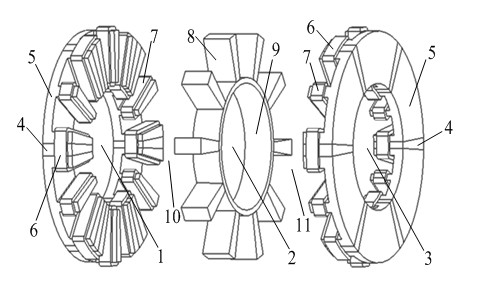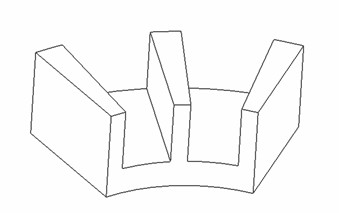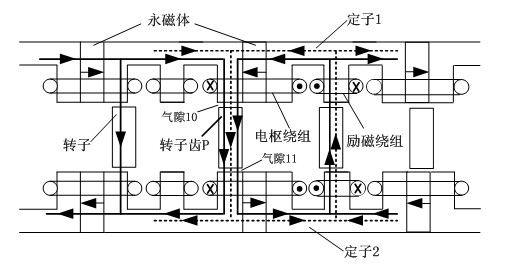Hybrid excitation E-shaped iron core axial magnetic field permanent magnet brushless motor
A technology of permanent magnet brushless motor and axial magnetic field, which is applied to the direction of motor, magnetic circuit shape/style/structure, electromechanical device, etc. Effect of small size and improved reliability
- Summary
- Abstract
- Description
- Claims
- Application Information
AI Technical Summary
Problems solved by technology
Method used
Image
Examples
Embodiment Construction
[0021] The hybrid excitation E-shaped iron core axial magnetic field permanent magnet brushless motor of the present invention includes a first stator, a rotor, a second stator, a permanent magnet, a three-phase concentrated armature winding and a single-phase concentrated excitation winding;
[0022] The first stator and the second stator are respectively located on both sides of the rotor. There are 6 E-shaped iron cores and 6 armature coils on each stator. Every two armature coils are connected in series to form a three-phase armature winding. The three-phase armature windings on the two stators are sequentially connected in series to form the three-phase concentrated armature windings of phase A, phase B and phase C of the entire motor; there are 6 excitation coils on each stator, and the 6 excitation coils are The concentrated winding is wound on the teeth in the middle of the stator E-shaped iron core. The above six coils are connected in series end to end in sequence to ...
PUM
 Login to View More
Login to View More Abstract
Description
Claims
Application Information
 Login to View More
Login to View More - R&D
- Intellectual Property
- Life Sciences
- Materials
- Tech Scout
- Unparalleled Data Quality
- Higher Quality Content
- 60% Fewer Hallucinations
Browse by: Latest US Patents, China's latest patents, Technical Efficacy Thesaurus, Application Domain, Technology Topic, Popular Technical Reports.
© 2025 PatSnap. All rights reserved.Legal|Privacy policy|Modern Slavery Act Transparency Statement|Sitemap|About US| Contact US: help@patsnap.com



